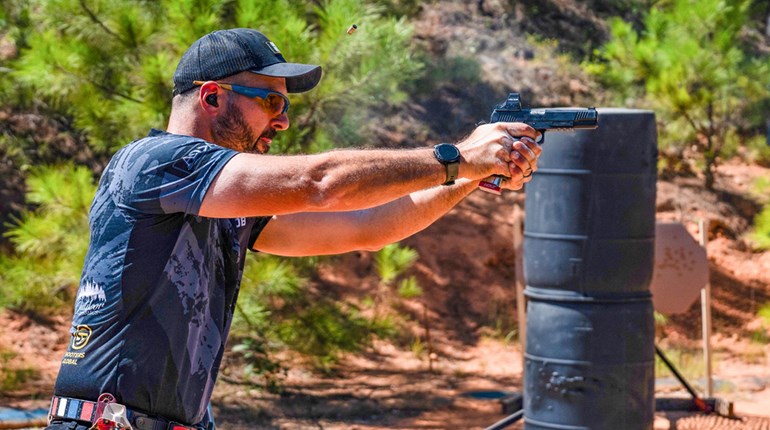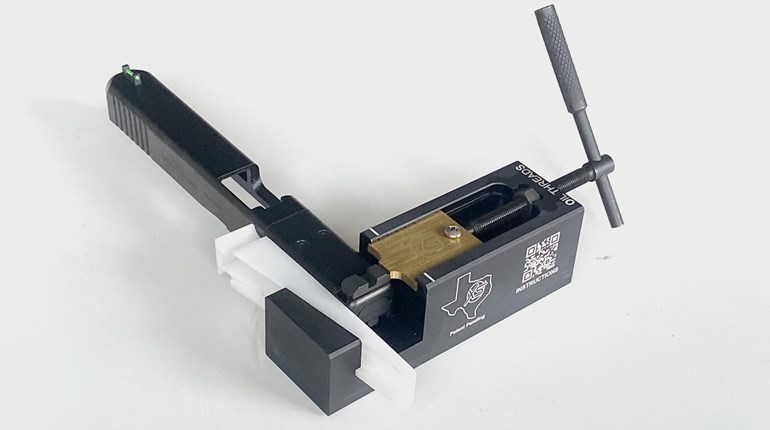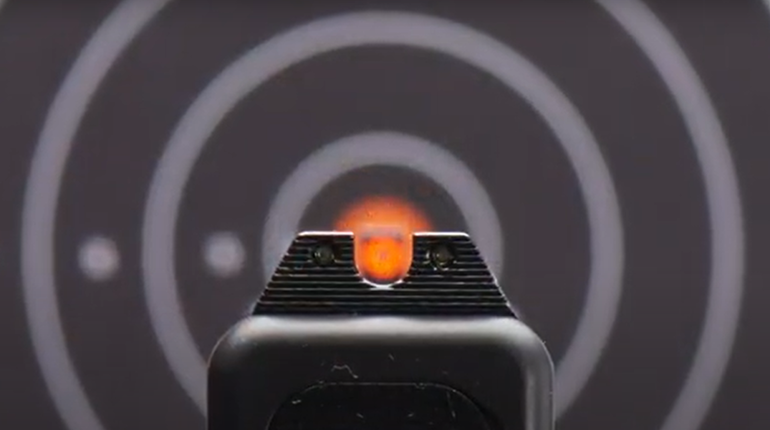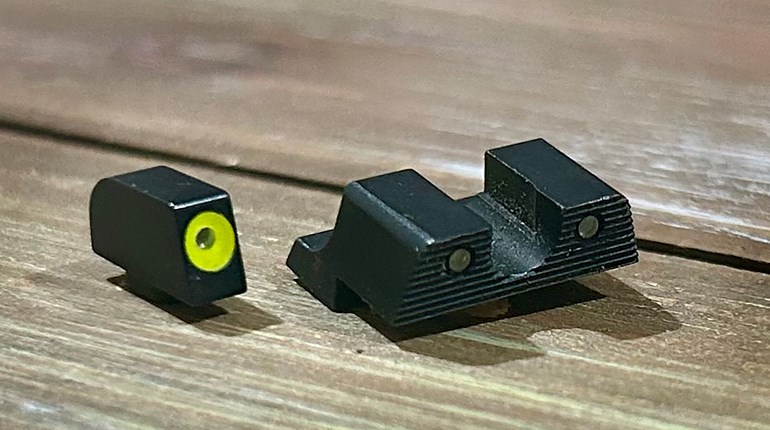
Whether you call them "iron sights" or "factory sights," you should be able to adjust them so your point of aim and point of impact match. Iron sights are either fixed or adjustable.
Fixed Sights
This term is somewhat misleading, as most fixed sights can be regulated to change point of impact. Fixed-sight units mounted on the slide, receiver or barrel using a dovetail can be drifted using a small hammer to effect horizontal changes in the point of impact. Normally, this is done to the rear sight, as many front sights are permanently attached by staking, silver-soldering or with adhesives. Front sights that are dovetailed in the slide or barrel can also be drifted.
Changes in elevation can be made by removing or adding material to the front or rear sight. The effect on point of impact will be opposite, depending on which sight is altered. To move point of impact downward, one should either add material to the front sight or remove material from the rear sight. Conversely, adding material to the rear sight or removing it from the front sight moves the point of impact upward.
Getting the gun to shoot to point of aim can be calculated by using the following formula that gives the change in sight height or windage to move bullet impacts to the point of aim at a given range:
X = desired change in bullet impact in inches
sight radius in inches distance to target in inches
X is the amount of change in sight height or sight windage in inches needed to bring bullet impact to the point of aim.
Adjustable Sights
Adjustable-sight units frequently use screw mechanisms mounted horizontally and vertically in the sight body to cause the sight blade or aperture to move laterally and/or vertically. Some screw-adjustment mechanisms have audible clicks, while others do not. Nearly all have graduations inscribed or painted on the sight body and an indicator on the adjustment screw or knob.
On some hunting rifles, vertical adjustment of the rear sight is made by movement of a stepped piece called an elevator, or a sight block, that slides on an inclined dovetail. Many military rifles use a ladder rear sight, in which sliding the rear sight block along a hinged, folding, ladder-like piece elevates the sight to varying degrees. Usually the ladder has ranges inscribed on it, so that positioning the sight on a given point on the ladder gives the required degree of elevation for the range indicated.
Regardless of the mechanism for adjustment, the process is the same: The rear sight is moved in the same direction as the desired change in bullet impact. Thus, to move bullet impact to the right, the rear sight must be moved to the right. With an adjustable front sight, the sight is moved in the direction opposite to the desired change in impact.







































